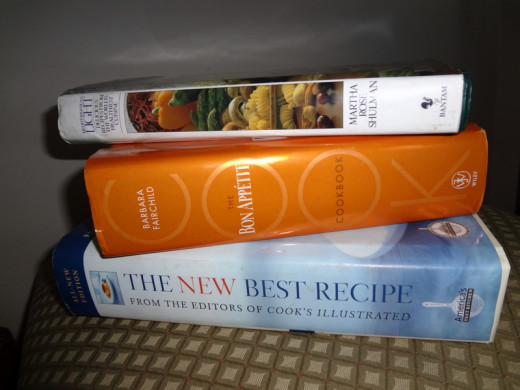Making Your Own Recipes: How to Get Inspired

How New Recipes Are Made
Are there any great recipes on the horizon yet to be discovered? It has been said there are no new recipes, just reinventions of what has already been done. But don't let that discourage you. Each cook has his own unique preferences, background and exposure to foods which reflects in his or her cooking.
We've already discussed the legalities surrounding recipe creation in the article, "How to Copyright a Recipe: Recipe Attribution." But how exactly are new recipes made?
Perhaps you married into a culture different from the one in which you were raised. Maybe you've been itching to give one of your grandmother's recipes a modern makeover. Or you could be on a special diet and find offerings on the internet sadly lacking. If so, you will never regret learning to create your own recipes. And you might just have some fun along the way! So what's the first step?
Similar Articles:
Experience is the Best Teacher
Unless you're a trained chef, you probably learned your skills by accompanying a parent or grandparent in the kitchen, watching cooking shows and reading cookbooks. If you are not experienced in the kitchen, these are all good places to start.
No matter how extensive your hands-on experience, though, reading will further enhance your abilities. Start your education by learning the basic flavors recognized by the human tongue: sweet and sour, salty and bitter. Some would also add "umami" and spicy. Chefs seek to create balance and harmony first on the plate and then on the palate, just like great artists seeks to paint a canvas aesthetically pleasing to the eyes.
Educate Yourself With Cookbooks
"Cooks' Book of Intense Flavors" is a great read, and there are plenty of exercises to train your tastebuds along the way. And no matter what you've been told, it is important to read cookbooks. As you browse recipes ask yourself: Why does this dish appeal to me? Is it the presentation? What is the role of each ingredient? Which techniques are important for the success of this recipe? What are the right proportions? Technique and proportion is important for everything from baking cookies to mixing up a vinaigrette. Just think about cookies for a moment.
A basic cookie recipe has fat, sugar, flour and eggs. Fat contributes toward soft and chewy texture, sugar sweetens, flour stabilizes and egg binds everything together. For a cookie recipe to work, it needs equal parts fat and sugar, double the amount of flour and a leavening agent such as soda or power. Of course, there are many variations on the basic recipe. But you have to understand the basic ingredients and their functions before embarking on your own creations.


Why Do I Love HubPages?
Writing at Hub Pages means instant gratification. You can publish as often as you like, when you like, and earn money on the side. You receive plenty of support from the friendly community and learn to polish your writing. Hub Pages provides tutorials that walk you through the world of online publishing. And the longer you’re with Hub Pages, the more confidence you gain. Intrigued? Please click here to quickly and easily create your account: New Member Sign-Up
Where to Find Inspiration
Once you've had a proper education and experience cooking, it's time to get inspired! When I've temporarily misplaced my cooking mojo or I'm dreaming up a new concoction, I often turn to photos.
Thumb through cookbooks and glossy food magazines. Check out photo-driven food sites like pinterest or foodgawker.com. Go to your favorite restaurant and have a meal or simply skim the menu for ideas. What's unique about the dish? Consider giving a recipe a healthy makeover; think gluten-free chocolate cake. Or give a classic dish a new ethnic identity, for instance, Chipotle sushi wraps.
Head to your nearest farmer's market or gourmet food store. Stroll down the aisles and draw inspiration from seasonal ingredients. Fragrant, golden persimmons might send you scrambling to the kitchen to whip up a batch of Peppered Balsamic Persimmon Jam. Or consider building a dish around a certain vegetable, fruit, cut of meat or herb.
Put It Down on Paper
Once you're submerge in the world of food, it's only a matter of time until ideas begin flooding your mind. Don't ignore those inner musings. Keep a notepad and pen handy. For example, one day a friend treated me to a tall, cool glass of horchata. Suddenly I realized horchata would translate into a creamy frozen treat. Horchata ice cream! I didn't know if a recipe had been developed already, but it sounded to-die-for. Then I started brainstorming and before long, I'd developed an ethnic ice cream sundae: Horchata Ice Cream with Bananas & Butter Caramel Sauce.
Once you have an idea in mind, it's time to outline. But that's another subject we'll consider in the article "How to Create Your Own Recipes". Meanwhile, let's get in that kitchen and start cooking!









